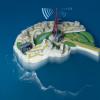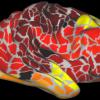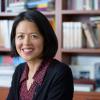News and Press Releases
Dec 14 2015 | Stanford Medicine - News Center
Karl Deisseroth discusses the path that led to his work, which has been referred to as the "most revolutionary thing that has happened in neuroscience in the past couple of decades.”
Dec 12 2015 | NeuroTalk S3E10: Takaki Komiyama
Takaki Komiyama, a professor at the University of California, San Diego in the Department of Neurosciences and in the Neurobiology Section of the Center for Neural Circuits and Behavior, talks about the anatomy of the sense of smell
Dec 11 2015
A new study shows that a circuit in a brain structure called the thalamus acts like a radio, with different stations operating at different frequencies and appealing to different “listening audiences.”
Dec 11 2015 | Stanford Medicine - News Center
The center is tuned to the needs of people with neurological conditions or injuries such as brain tumors, movement disorders, brain aneurysms, spine deterioration, Parkinson’s disease and memory disorders.
Dec 9 2015 | Stanford News
Stanford psychologist's 18-month study of his own brain reveals new relations between brain and body
Russell Poldrack scanned his brain to create the most detailed map of brain connectivity ever. In the process, he and his colleagues revealed strong correlations between brain function and gene expression, and how the brain reorganizes itself when running low on caffeine.
Dec 7 2015 | Stanford Medicine - News Center
Short-circuiting the need for expensive clinical trials, researchers uncovered an association between androgen blockers and cognitive decline by examining patient medical records.
Dec 4 2015 | NeuroTalk S5E8: Nils Brose
NeuWrite West talks with Nils Brose, Professor and Director of the Dept. of Molecular Biology at the Max Planck Institute of Experimental Medicine in Göttingen, Germany.
Dec 3 2015 | Stanford Medicine - News Center
Stanford researchers are using the African turquoise killifish as a model to study longevity and have provided its genetic information as a resource for the research community.
Nov 24 2015 | Stanford News
Stanford psychologist Jeanne Tsai found different cultures value different positive facial expressions, and that these differences arise in deep brain circuits that can predict who people like and dislike.
Nov 23 2015 | Stanford Medicine - News Center
Eight faculty members from the School of Medicine and one from the School of Humanities and Sciences have been elected fellows of the American Association for the Advancement of Science.













